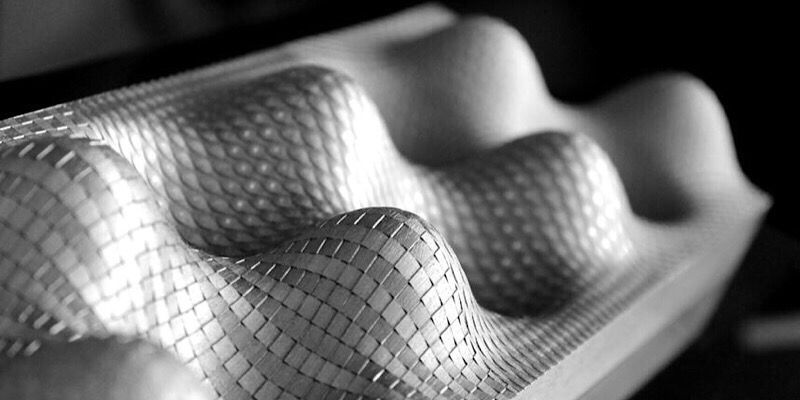Posted on: Jan 13th, 2020, | By WayKen Rapid Manufacturing
Designers determine the requirements of the final part. The basic ones include geometry, sizes and material. However, as the industry develops, the part must have more and more quality parameters that are not as easily chosen or analyzed. Such may include hardness, grain, tolerances, and surface texture. A good designer must be able to choose from the optimum combination of the part parameters to make it work perfectly and cost as little as possible. This article is aimed at choosing the right surface texture of the part wisely.
Surface Texture Parameters
There are a lot of possible ways to get the desired surface texture. The textures themselves are described in a number of important ways. Firstly, the machined surfaces (no coating applied) can be determined by their layout, waviness, and roughness. The coated surface textures can be either mirror-like, matted, or have a customized texture. In addition, the hardness and the corrosion resistance of the surface are important when functional coatings are concerned.
Machined Surfaces Textures
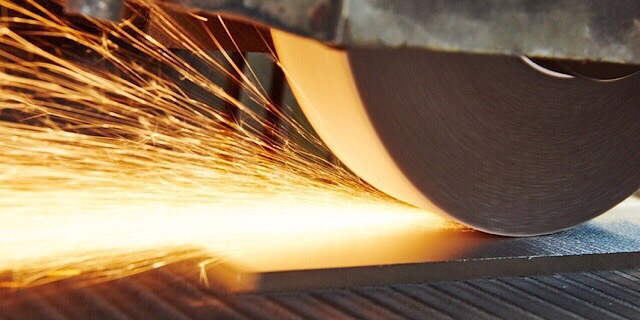
The machined surfaces are the ones without any coatings and paint. Their texture is determined by the processing method and the required quality of the part. A number of parameters comprise the overall result. With machined surfaces, the name of the parameter greatly depends on the distance between two uneven elements.
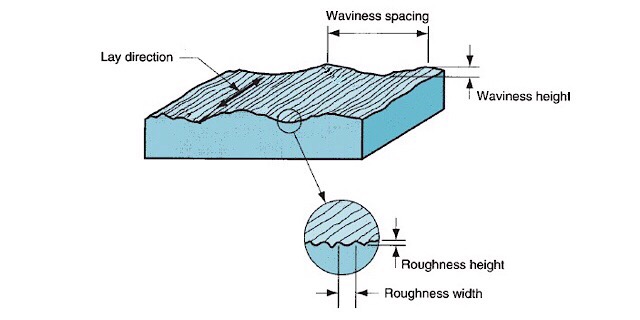
- Layout. A layout is determined by which processing tool removes (or adds in cases of 3D-printing) the material from the workpiece and its trajectory. For example, milling a part leaves a visible pattern on the surface of the part. You can actually see the toolpath on a milled part even if its surface roughness is very smooth. You can work with the layout of the part in terms of better lubrication. The crisscrossed layout of the surface will keep the lubricant longer. That’s why honing is such a coveted technology for the hole manufacturers. The inner surfaces of the hole are lubricated for a much longer period of time.
- Waviness. Waviness is much smaller compared to the layout. When the layout is comparative to the part dimensions in size, waviness is considerably smaller but it can still be felt if the overall quality of the part isn’t very high. The waviness results from the vibrations of the processing tool while the excess material is removed. Both the layout and the waviness are considered low-grade surface textures for unimportant parts or prototypes and can be negated by the more precise machining methods.
- Surface roughness. Surface roughness is the parameter you want to check when you need a specific texture of a part without any coating. Surface roughness determines whether your part will be smooth, matted, mirror-like or notched. There are a lot of ways to measure surface roughness, If you want better aesthetics, corrosion resistance, and overall smoothness, reduce the Ra parameter. For better part life and corrosion resistance, reduce Rz. If you want a better contact strength, you must reduce the Rtm ( average distance between two peaks or valleys).
It should also be noted that some processing methods can add individual surface texture to the material. For example, sandblasting a material will leave an artificial roughness that can be used to prevent the part from slipping from the hand of the user, for example.
Coatings for Surface Texture
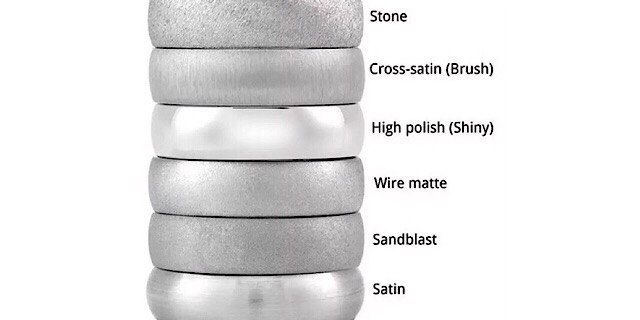
Texturing through surface roughness is quite expensive because the overall quality of the surface depends on the quality of the machining, which in turn depends on expensive equipment, cutting tools and time. A cheaper way to get a gloss, matte, shiny or mirror-like surface on even a rough part is to apply a coating. Metal parts can be coated in a lot of different ways.
Painting
Applying paint is the simplest method to create a reliable surface texture on a rough part. And the beauty of the method is in the fact that modern paints do not only apply color to the part but they can also apply texture. So, if you are looking for the cheapest way to make your part look good, just ask the manufacturer to skip on the precision surface finishing operations and apply a considerable layer of paint to cover them and make the part smooth. In addition, the paint will prevent the material from corrosion.
Paints can make your part matte, glossy, shiny, rough, metallic etc. They can imitate virtually any type of texture available in the market. So, if you want some custom texture, you should first, probably go and see the options the paint offers. However, if you choose a texture offered by paint, lower the size of the surface by the paint layer, which can be considerable.
Powder Coating
Powder Coating is similar to painting but the paint layer is much thinner. So, powder coating serves precise parts better and you can’t really have a lot of different textures because of the process specifics ( plastic powder is sintered on the surface of the part) so you can only get either matte or a glossy surface with it. The advantages of powder coatings lie elsewhere.
Anodizing and Electroplating
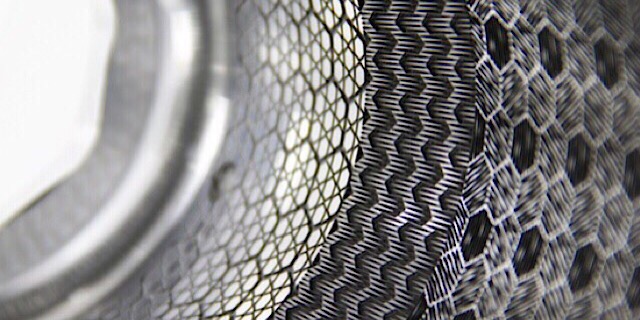
Those are the processes that cover the surface of one metal with the other. You should choose them if you want to keep the feel of the part being metal but nonetheless if you want to considerably increase the texture quality of the surface. Such methods can provide you with good metallic texture in any color you want. But the texture is limited to metal. You can’t expect to have all the options of paint or even powder coatings. The anodized or electroplated layers are lower than those of paint so the dimensions of the part remain the same.
Conclusions
There are a lot of surface texture parameters. Some are simply aesthetic and determine the visual outlook of the part and others determine its functionality as well (surface roughness). As a concluding remark, I think the optimal way to get a texture you want and not spend a whole lot of money on machining is to get a part machined to medium quality and then cover it with paint. That way you won’t spend too much money on processing and paints offer the most variety of textures.
We really hope that this article can help u, and if you would like to have our more advice about surface treatments.

